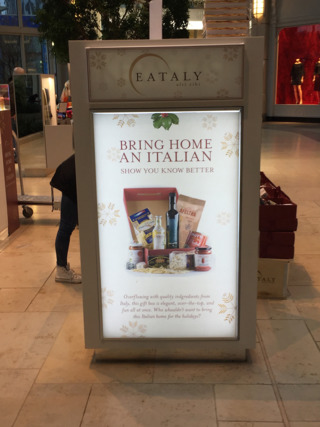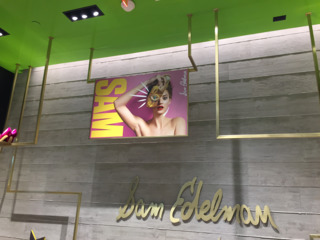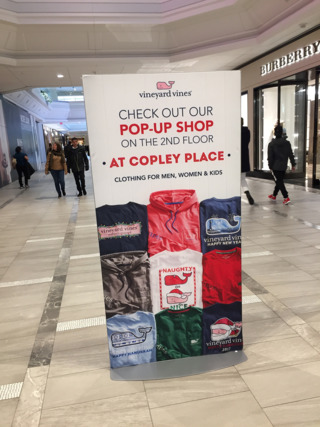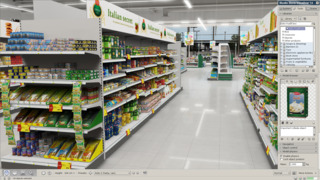Mall Business: POP/Retail Graphics On Display
Whether or not a retail apocalypse occurs, there will still be a healthy market for some kind of POP graphics.
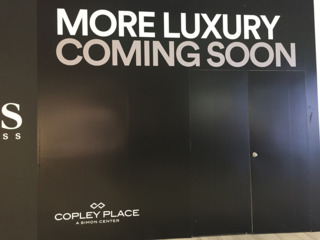
As I write this during the peak of the holiday shopping season, data on the health of the retail sector have been mixed. On one hand, on an inflation-adjusted basis, retail sales for November 2017 were up about four percent over November 2016,[1] which is the best November retail has had since 2010. On the other hand, long-term analysis of retail data has found that sector to be fairly troubled; real retail sales have been running just under +2.5% and per-capita retail sales are still below pre-recession levels. Then, in early November 2017, a Bloomberg article[2] foretold a looming “retail apocalypse,” a phenomenon that now even has its own Wikipedia entry (https://en.wikipedia.org/wiki/Retail_apocalypse). And if you’ve been to a mall recently, you likely have seen evidence of this: major retail chains are closing locations and some are disappearing outright.
For us, though, the most important question is: what does it mean for the market for retail graphics?
Spirits in the material world
It depends on what we mean by retail.
“There is definitely a reduction in traditional retail,” said Larry D'Amico, director of sales & marketing for Durst U.S. “Sears Roebuck, Macy’s, that kind of retail is declining and there are store vacancies, but other areas seem to be growing and making up for it. Look at convenience stores at gas stations. Those are pretty hot, and they have 10 times more graphics than they used to have.”
There has also been an influx of web-only retailers moving into the bricks-and-mortar space. Amazon.com opened some large retail locations, most conspicuously on 34th Street in Manhattan, but it’s not the only virtual business staking out a claim in the material world. “Internet retailers in the clothing segment need a place where people can touch and feel and try on certain products,” said D’Amico.
There is a kind of irony in this; for years, big boxes like Best Buy bemoaned the fact that they were increasingly serving as showrooms for Amazon, and now the reverse could very well end up being the case. But the idea of a “showroom” is an important one. New trends in, for example, clothing have the potential to make physical retail even more important, as the move toward “fast fashion” continues.
“Take a Nike or other big brand store,” said Einar Ek, go to market manager–digital finishing for Esko. “Rather than having a few square feet to show everything, they would have products ready for testing, so when your 15-year-old son goes down to try on [sneakers], he’s only going to go back and buy them on the computer. It’s not really about the service inside the store. The kids go test them, then personalize them on the web. The business models of these brands are about to change. It’s about e-commerce.”
It foretells a continued symbiosis between the online and offline retail environment.
Retail trends are still about more than store demographics. “Although you might have some brand owners that decide to reduce the number of shops, within those shops, the communication with the end customer remains critical—becomes even more critical,” said Geert De Proost, director, solutions marketing, for Esko. “You have conflicting trends. On the one hand, maybe some branches will be closed, but on the other hand there will be more intensity around POP displays to engage the passerby with the product that is on the shelf. There is no argument about the marketing value of in-store signage and display.”
“I believe PSPs are anxious as there’s always the risk of customer loss, particularly with the impact to high-volume buyers of wide-format-produced POP, which is where much of the losses occur,” said Dan Johansen, marketing manager, wide format solutions, Commercial & Industrial Printing, for Ricoh. “With those risks present, now more than ever it’s important for PSPs to make sure they’re diversified with other market segments and products to soften these reductions.”
50 shades of gray
The key word here is “diversification.” Commercial printers long ago learned the value of having a diversified product and service mix, which enables them to nimbly exploit new areas when certain products start to decline. This, after all, has been a large part of the reason many of them moved into wide-format and display graphics in the first place. At the same time, many of the traditional print “silos” have been breaking down, and there is less and less of a clear distinction among retail, display, industrial, commercial, and even packaging printing.
“The real trend we see is that instead of signage and retail as segments as we knew them, now there is a gray zone in the middle that is getting larger,” said Ek. “These printers are very flexible so they would jump from one market to another. As digital printers move to corrugated, suddenly that opens the door to packaging. You see them cross each other’s boundaries. It’s very difficult to talk about sign, display, and packaging today. It’s really about the application that you make.”
For a lot of brands, POP graphics are complementary to packaging, and often use the same substrates, especially corrugated. This means that even if the volume of retail graphics goes down, there is still the packaging element, which will remain regardless of whether commerce is physical or electronic. “It’s really about working with materials,” added Ek.
Materials in the spirit world
Speaking of materials, new and changing substrates are opening up new opportunities for retail graphics providers. One of the hottest trends in display graphics is what are known as silicone-edge graphics (SEG). This is where textile-based signage has a rubber gasket sewn around the edge which allows it to be snapped inside a lightweight aluminum frame. They are easy to install, look elegant, and can be enhanced with various lighting effects. “Silicone-edge graphics and backlit displays are everywhere,” said D’Amico. “I see a lot of companies building boxes and doing special things with lighting. Some people are using dye-sublimation and some are using UV, and they’re getting better and better quality.”
SEG-based or not, the growth of soft signage is not slowing down.
“A change that's been ongoing for a few years and is continuing to grow is the move to fabric-based soft signage to replace everything from traditional vinyls to backlits,” said Johansen, “because it saves print buyers huge sums in shipping across the country.”
New fabrics and digital textile inks are emerging, but in the signage space UV can easily carve out a niche, since the primary drawbacks to UV fabric printing—stiffness and poor wearability—are not an issue for display graphics.
“Retail and POP have become virtually all UV, with the exception of dye-sub for some portion of soft signage, although there is a broad variety of fabrics that print very well on UV devices,” said Johansen. “This is where hybrid printers have had a significant impact as they can address both flexible and rigid POP and retail products, including both indoor and outdoor signage for retail. We believe UV-based printing in this segment will make up the majority of impressions.”
Graphics graphics everywhere...
“It’s all about walls, floors, and windows,” said D’Amico. “That’s been an ongoing trend for the past couple of years. More signage in different places, utilizing the square footage they’ve got and looking at some unique aspects of it using the materials that are available today.”
If you have been to a retail location recently you know that virtually every surface can be covered with graphics. The opportunity here is not just being able to print on all of these assorted materials, but to come at display graphics from the service side of things.
Take window graphics. Quality is obviously important, but installation can be even more so. “Maybe it could be the most important thing is to have a window graphic changed overnight,” said Ek. “Then it’s less about print quality than it is about how quickly can you change it. Do you have a good service team, and can we rely on you because the sale starts tomorrow morning at eight o’clock.”
Mall wonders
Regardless of whether the “apocalypse” comes to retail, there will still be a healthy market for some kind of POP graphics, even if they start to blur into other kinds of display graphics. New materials and display technologies also offer ample opportunities. “New substrates are coming to market at a rapid pace, expanding the market by offering both new and exciting options for what we print on, as well as new places where our printed graphics can be used,” said Johansen, “including floors, walls, customized retail fixtures and for personalized, locally facing campaigns.”
[1] https://www.census.gov/retail/marts/www/marts_current.pdf.
[2] https://www.bloomberg.com/graphics/2017-retail-debt/.

